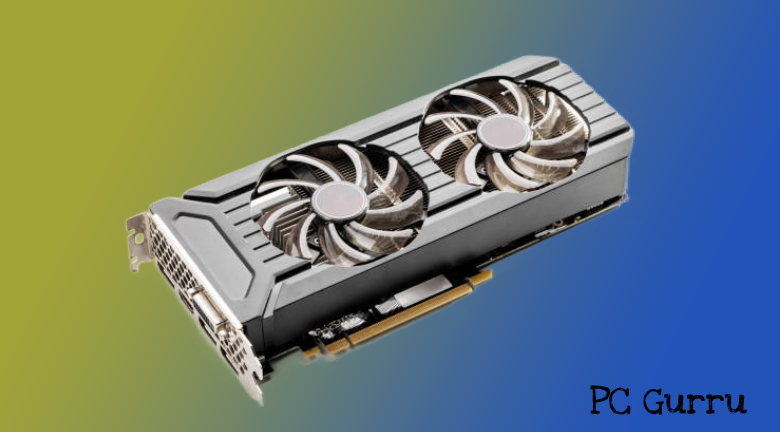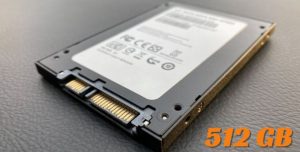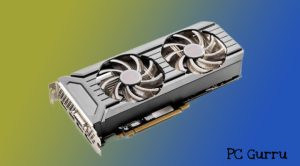Table of Contents
ToggleIntroduction
Do laptops have graphics cards? The answer is yes because all laptops have integrated graphics card. This means that the graphics processing unit is installed in the computer’s motherboard or main circuit board.
Discrete graphics cards are sometimes found in high-performance laptops, including gaming laptops.
Because Discrete graphics cards generate more heat and require more power than integrated graphics cards, they are generally more efficient than integrated graphics cards, making them unsuitable for most laptop users.
Importance of graphics card in laptops
- It plays an important role in presenting games, animations, videos or images on your laptops more distinctly.
-
When you play games, watch videos, or create animations, the graphics card replaces the CPU in graphics-related tasks, improving the way the CPU processes data and other tasks
-
Graphics cards are a must for laptop users who prefer realistic graphics and high-performance graphics.
Understanding Graphics Cards in Laptops
A graphics card, also known as a GPU (Graphics Processing Unit), is a hardware component that is used to render and display visual information on a computer/laptop screen.
In a laptops, graphics cards is used to perform graphics processing, such as rendering high-quality images, videos, and 3D graphics.
It works in conjunction with the laptop’s CPU (Central Processing Unit) to ensure smooth and efficient performance when running graphic-intensive applications, such as video games, video editing software, and 3D modeling programs.
integrated Vs dedicated graphics cards.
Integrated Graphics Cards:
Integrated graphics cards are built into the motherboard of a computer. They share resources with the CPU and other parts of the system because they process graphics using part of the RAM.
Advantages of Integrated Graphics Cards
Cost effective: They are cost-effective as they are already built into the motherboard which means they do not require an additional purchase.
Power efficiency: They consume less power compared to dedicated graphics cards. This can result in longer battery life for laptops. As a result, laptop batteries may last longer.
Suitable for basic tasks: They can handle some basic tasks such as web browsing, document editing, and multimedia playback. They can also handle some light gaming and video streaming,
Dedicated Graphics Cards
Dedicated graphics cards, on the other hand, are separate components that have their own dedicated memory and processing power.
As compared to integrated graphics, they perform better because they are made especially for tasks requiring a lot of graphics.
Dedicated graphics cards are essential for gamers, video editors, and other professionals who require high-quality graphics and smooth rendering.
Advantages of Dedicated graphics cards
Enhanced Graphics Performance: They provide enhanced graphics performance making games and multimedia applications’ visuals smoother and more detailed.
Improved Gaming Experience: They are essential for gaming enthusiasts. They provide the necessary power to run modern games at higher resolutions and settings, delivering a more immersive and visually stunning gaming experience.
Faster Video Rendering and Editing: Video editing and rendering tasks can be resource-intensive, requiring significant processing power. Dedicated graphics cards accelerate these tasks by offloading the processing load from the CPU to the GPU.
Multiple Monitor Support, GPU Computing, Future-Proofing are also advantages of Dedicated Graphics Cards. At last, Dedicated Graphics Cards is better than integrated graphics cards because from the above discussed advantages.
impact of gPU on overall laptop performance
Graphics cards have a significant impact on the overall performance of a laptop. They are responsible for rendering images, videos, and games, ensuring smooth and high-quality visuals.
A powerful graphics card can enhance the gaming experience by providing faster frame rates and better graphics settings. It also plays a crucial role in tasks that require graphic-intensive applications, such as video editing and 3D modeling.
With a capable graphics card, laptops can handle these tasks more efficiently, resulting in faster rendering times and improved productivity.
Types of Laptops and Graphics Cards
Different Types of Laptops
The following are different types of laptops.
Ultrabooks: Ultrabooks are lightweight and slim laptops designed for portability. They are perfect for people who need a laptop on the go and have great battery life.
Gaming Laptops: Gaming laptops are specifically designed for gaming enthusiasts. They feature powerful processors, high-resolution displays, and dedicated graphics cards to handle demanding games.
Chromebooks: Chromebooks run on Google’s Chrome OS and are designed for users who primarily use web applications and cloud storage. They are budget-friendly and offer fast boot times.
Convertible Laptops: Convertible laptops, also known as 2-in-1 laptops, can be used as both a laptop and a tablet. They have a touchscreen display and a flexible hinge that allows the screen to be flipped or detached.
Graphics Card Capabilities of Different Laptop Tiers
Entry-level laptops: They are typically come with integrated graphics cards, built into the processor. While these graphics cards may not be as powerful as dedicated ones, they are adequate for basic tasks like web browsing, document editing and streaming videos.
Mid-Range Laptops: Mid-range laptops usually offer dedicated graphics cards, which provide a significant boost in performance compared to integrated graphics. These laptops are suitable for casual gaming, photo and video editing, and running productivity software that requires more graphical horsepower.
High-end laptops: High-end laptops use high-end dedicated graphics cards. These laptops are designed for complex tasks such as high-end gaming, 3D modeling and video rendering. They offer excellent graphics performance and can easily handle resource-intensive applications.
Popular Laptop Models with Varying Graphics Card Configurations
Dell XPS 15: This high-performance laptop offers different graphics card options, including the NVIDIA GeForce GTX 1650 and the more powerful NVIDIA GeForce GTX 1660 Ti. These configurations make it suitable for both casual gaming and demanding tasks like video editing.
HP Omen 15: The HP Omen 15 is a gaming laptop that provides different graphics card choices to cater to various gaming needs. It can be equipped with an NVIDIA GeForce GTX 1650 for entry-level gaming or upgraded to the more powerful NVIDIA GeForce RTX 3070 for superior performance.
Lenovo Legion 5: The Lenovo Legion 5 is another gaming laptop that offers different graphics card configurations. It can be configured with the NVIDIA GeForce GTX 1650 for smooth gameplay in popular titles or upgraded to the NVIDIA GeForce RTX 3060 for a more immersive gaming experience with ray tracing capabilities.
Do Laptops Have Graphics Cards?
Yes, laptops do have graphics cards. These cards are responsible for rendering and displaying images, videos, and games on the laptop’s screen.
Having a dedicated graphics card in a laptop is especially important for tasks that require high-quality graphics, such as gaming, video editing, and 3D modeling.
It allows for smoother and more immersive visual experiences. However, not all laptops come with dedicated graphics cards. Some laptops rely on integrated graphics, which are built into the laptop’s processor.
While integrated graphics can handle basic tasks, they may not be as powerful as dedicated graphics cards.
How to check if I have a Graphics Card on my Laptop?
To check if your laptop has a graphics card, you can follow these steps.
- First, go to the “Device Manager” by right-clicking on the Windows start button and selecting it from the menu.
- In the Device Manager window, expand the “Display adapters” category.
- If you see a graphics card listed, then your laptop has a dedicated graphics card.
- If you see only the integrated graphics like Intel HD Graphics, then your laptop does not have a separate graphics card.
- It’s important to note that some laptops may have a switchable graphics feature where they use both integrated and dedicated graphics depending on the tasks being performed.
Can A Laptop Graphics Card Be Upgraded?
Yes, in some cases the graphics card of the laptop can be upgraded. But it depends on the specific model and design of the laptop.
Upgrading a graphics card in a laptop is generally more difficult as compared to a desktop computer. Some laptops have a discrete graphics card that can be upgraded by removing the old card and inserting a new one.
However, many laptops have integrated graphics, which means the graphics card is installed in the motherboard and is not easily replaceable.
Before attempting to upgrade a laptop’s graphics card, it is important to examine the specific model of the laptop and consult the manufacturer’s instructions and recommendations
Why Do Laptops Have Two Graphics Cards, intel and nvidia?
Laptops often come equipped with two graphics cards, an Nvidia and an Intel, for several reasons. One of the main reasons is that Nvidia graphics cards are known for their superior performance when it comes to tasks that require high graphics processing power, such as gaming, video editing, and 3D modeling.
On the other hand, Intel integrated Graphics cards are more power -efficient and are sufficient for everyday tasks like web browsing, word processing, and video streaming.
By having both graphics cards, laptops can dynamically switch between them, using the Nvidia card for demanding tasks and the Intel card for more basic operations.
This allows for better performance and longer battery life, providing users with a balanced and versatile computing experience.
How To Add A Graphics Card To Your Laptop?
Adding a graphics card to your laptop can greatly enhance its performance and allow you to enjoy more demanding applications and games.
- The first step is to ensure that your laptop has an available slot for a graphics card. Once confirmed, you will need to purchase a compatible graphics card that fits the slot.
- Before installation, make sure to uninstall any existing graphics drivers and power off your laptop.
- Open the casing and locate the slot for the graphics card. Carefully insert the graphics card into the slot and secure it with screws if necessary.
- Close the casing and power on your laptop. Install the necessary drivers for the new graphics card and restart your laptop.
- Finally, configure the display settings to utilize the new graphics card. Adding a graphics card to your laptop requires careful installation and configuration, but it can greatly enhance your gaming and graphics capabilities.
What If A Laptop GPU Dies?
If a laptop GPU dies, it can be a significant issue. The GPU, or Graphics Processing Unit, is responsible for rendering graphics and images on the screen.
Without a functioning GPU, the laptop may not be able to display anything or may have distorted and glitchy visuals. In such cases, the laptop may need to be taken to a professional technician for repair or replacement.
It is essential to back up any important data before attempting any repairs, as there is a possibility of data loss during the process.
Additionally, it may be worth considering the cost of repairing or replacing the GPU compared to the overall value of the laptop.
Do Gaming Laptops Have Graphics Cards?
Yes, gaming laptops do have graphics cards. Graphics cards, also known as GPUs (Graphics Processing Units), are an essential component of a gaming laptop.
They are responsible for rendering and displaying high-quality graphics and animations in games. Gaming laptops are designed to provide a smooth and immersive gaming experience, and a powerful graphics card is crucial for achieving that.
The graphics card in a gaming laptops determines the level of detail, resolution, and frame rate that the laptop can handle in games. Having a dedicated graphics card allows gaming laptops to handle more demanding games and ensures a better overall gaming performance.
Conclusion
Many people criticize gaming laptops for their bad design and appearance. Many gaming laptops look bulky and unappealing. However, there are many reasons why a gaming laptop might look bad.
One of the most obvious reasons is that a gaming laptop needs to have powerful hardware, which means it needs to be bigger and heavier than a regular laptop.
Another reason is that gaming laptops often come with unique features, such as customizable lighting or aggressive angles. These angles can make a gaming laptop look more aggressive and not as refined as other laptops.
Whether or not you like the look of a gaming laptop is subjective, however, there are some obvious reasons why it might not look as good as other laptops.
FAQS
Q: Do all laptops come with dedicated graphics cards?
A: No, not all laptops come with dedicated graphics cards. While many laptops have integrated graphics, higher-performance laptops, especially those designed for gaming or graphic-intensive tasks, may feature dedicated graphics cards.
Q: Are dedicated graphics cards necessary for regular use and productivity tasks?
A: For everyday use and typical productivity tasks, integrated graphics are usually sufficient. Dedicated graphics become more important for tasks like gaming, video editing, 3D modeling, and other graphics-intensive applications.
Q: How can I find out if my laptop has a dedicated graphics card?
A: You can check your laptop’s specifications either in the user manual, on the manufacturer’s website, or by accessing the device manager on your computer. Look for entries like “Display Adapters” to identify the installed graphics hardware.
Q: Do ultrabooks and thin laptops have dedicated graphics cards?
A: Many ultrabooks and thin laptops prioritize portability and energy efficiency over high-end graphics performance. While some may have integrated graphics, a few models come with lower-power dedicated graphics suitable for light gaming and multimedia tasks.
Q: Are there different types of dedicated graphics cards for laptops?
A: Yes, there are various dedicated graphics cards available for laptops, with different levels of performance. NVIDIA and AMD are two common manufacturers providing GPUs for laptops, and models vary from entry-level to high-end, catering to different user needs.
Q: Can laptops without dedicated graphics cards handle modern games?
A: Laptops without dedicated graphics cards may struggle to run modern games smoothly, especially those with high graphics requirements. For gaming enthusiasts, a laptop with a dedicated gaming GPU is recommended for an optimal gaming experience.
Q: Do MacBooks have dedicated graphics cards?
A: Some MacBook models, especially those targeted at professionals and creative users, come equipped with dedicated graphics cards. However, many MacBook models rely on integrated graphics for energy efficiency and design simplicity.








